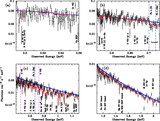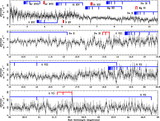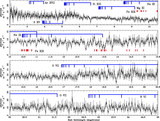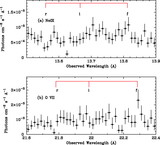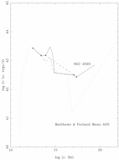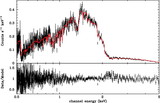Image Details
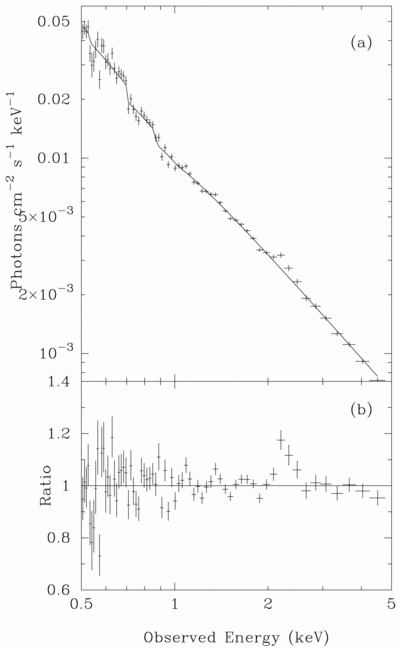
Caption: Fig. 2.
Comparison of the NGC 4593 MEG data (binned at 0.32 Å) with a broken power‐law model modified by two absorption edges and Galactic absorption (﹩1.97\times 10^{20}﹩ cm−2). "Edge models" have historically been used to model lower spectral resolution CCD data. The hard X‐ray photon index is fixed at 1.794, and the best‐fitting soft X‐ray index and break energy are ﹩2.26\pm 0.05﹩ and ﹩1.03^{+0.04}_{-0.03}﹩ keV, respectively. The best‐fitting edge energies of ﹩0.708\pm 0.003﹩ and ﹩0.868^{+0.007}_{-0.010}﹩ keV agree well with the expected rest‐frame energies of the neutral Fe L3 (0.707 keV) and O VIII (0.871 keV) edges, respectively. The addition of an O VII edge (0.739 keV) does not significantly improve the fit. The threshold optical depth of the O VII edge is less than 0.03 at the 90% confidence level. Note that by using this model, the inferred optical depth of the O VIII edge could be affected by the Ne IX 1s2–1s2p (λ13.447) absorption feature (at ~0.89 keV, observed). The inferred depths of the O VII and Fe L3 edges could also be influenced by complexity in the spectrum between ~0.7 and 0.8 keV, in particular from Fe inner shell and O VII resonance absorption.
Copyright and Terms & Conditions
© 2003. The American Astronomical Society. All rights reserved. Printed in U.S.A.



